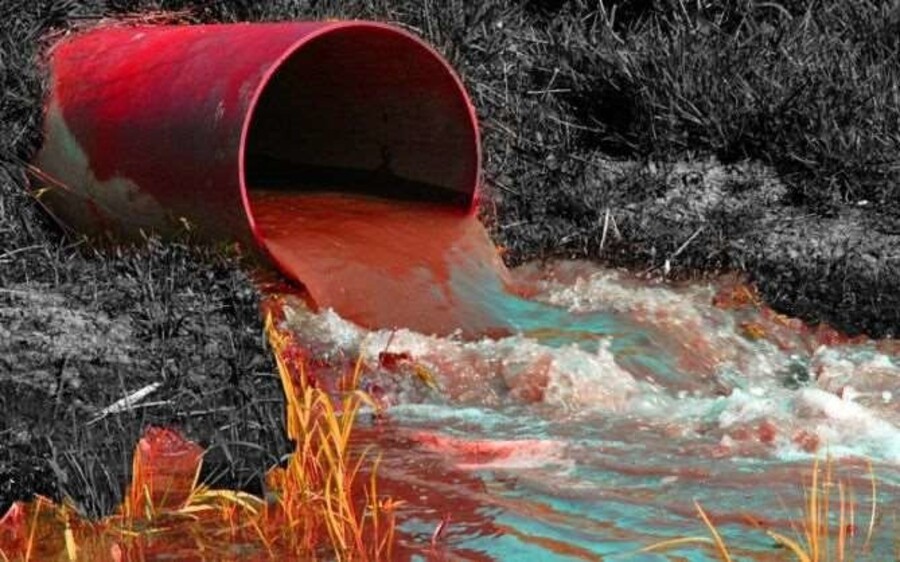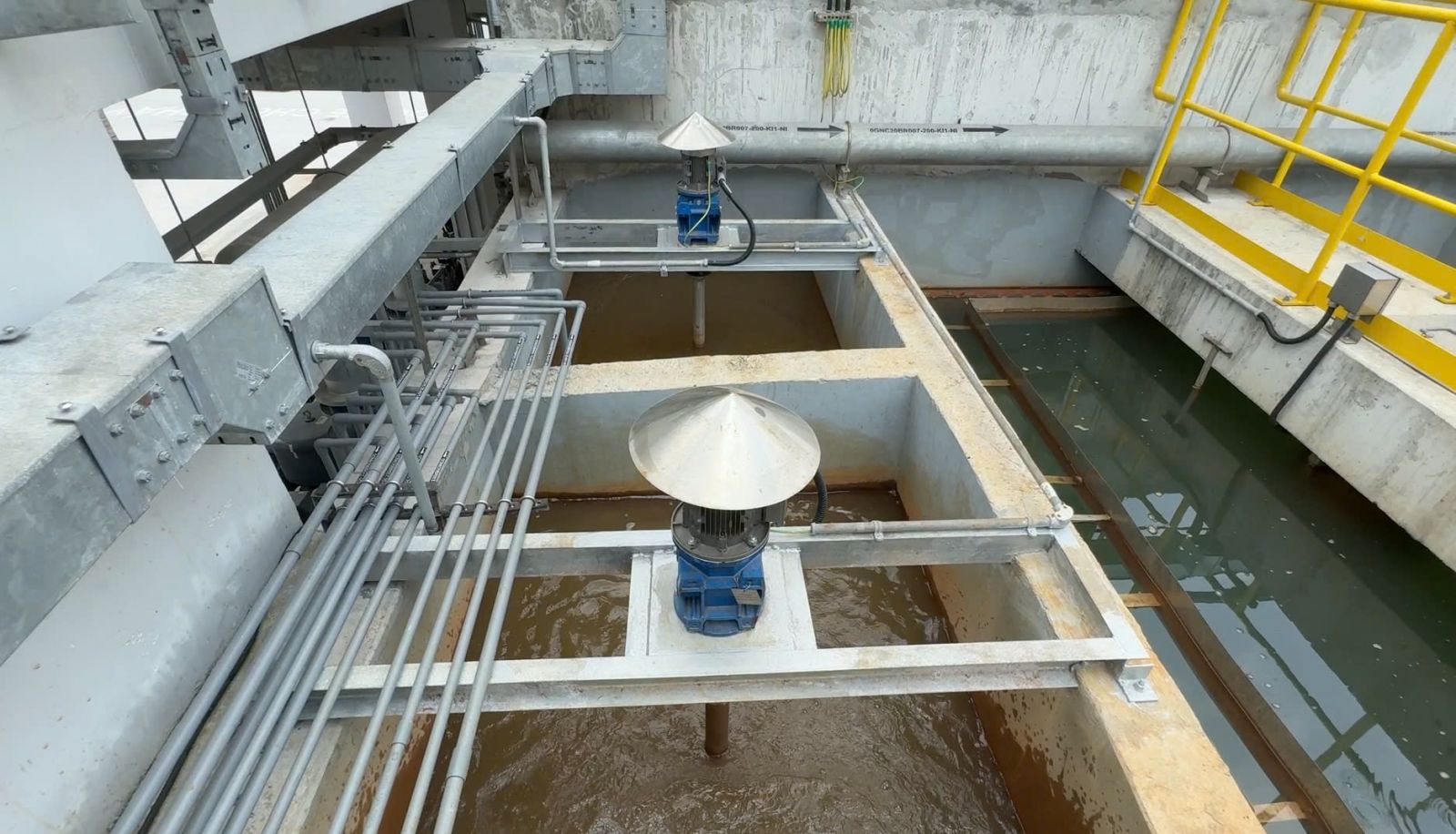Textile dyeing wastewater treatment is one of the most challenging environmental issues faced by the textile industry. With a massive amount of wastewater containing harmful chemical compounds, the dyeing process has put significant pressure on ecosystems, particularly groundwater and surface water sources. In the context of increasingly stringent environmental protection laws and the need for sustainable development by businesses, building an efficient, cost-effective wastewater treatment system is crucial.
1. Understanding Textile Dyeing Wastewater
1.1. What is Textile Dyeing Wastewater?
Textile dyeing wastewater is generated throughout the entire textile production process, including material preparation, fiber coating, bleaching, washing, dyeing, and finishing. During each stage, large quantities of water are used, accompanied by various chemicals such as surfactants, enzymes, salts, alkalis, acids, and dyes.
As a result, the used water contains numerous impurities, with the most concerning being non-biodegradable dyes, complex organic compounds, high COD and BOD levels, fluctuating pH, and sometimes even toxic heavy metals. This type of wastewater is characterized by strong color, odor, high turbidity, and difficulty in biodegradation, making it one of the hardest to treat in modern industries.

Textile Dyeing Wastewater Contains High Levels of Dyes and Chemicals
1.2. Current Status of Textile Dyeing Wastewater
Currently, wastewater from dyeing factories is one of the main contributors to water pollution in many industrial zones and traditional craft villages in Vietnam. While large industrial zones have started to invest in wastewater treatment systems, many small-scale production facilities still discharge untreated wastewater directly into the environment.
This situation not only deteriorates the quality of surface and groundwater but also severely affects public health and aquatic ecosystems. In particular, some dyes in the wastewater can change soil properties, disrupt microbial structures, and disturb natural balance. Moreover, water pollution leads to air and soil contamination, creating a complex, uncontrollable pollution cycle if not treated promptly and effectively.
2. Why is Textile Dyeing Wastewater Treatment Necessary?
-
Protecting the Environment: Textile dyeing wastewater contains difficult-to-degrade organic compounds, dyes, and heavy metals. If untreated, it causes severe pollution to soil, surface water, groundwater, and aquatic ecosystems.
-
Enhancing Brand Image and Reputation: Businesses with modern wastewater treatment systems that operate efficiently are often highly rated for their social responsibility, thus creating a professional and trustworthy image in the eyes of partners and customers.
-
Expanding International Market Reach: Major export markets like Europe, the US, and Japan place great emphasis on environmental standards in the supply chain. Companies that manage wastewater properly are more likely to meet technical requirements and pass green certifications.
-
Cost Savings and Increased Production Efficiency: After proper treatment, water can be reused in various stages such as washing and equipment cooling, significantly reducing both water purchase costs and wastewater treatment costs.
-
Sustainable Development for the Textile Industry: Producing clean, sustainable textiles is a global trend. Proper wastewater treatment is the foundation for businesses to integrate into and thrive in the green economy.
3. Methods for Textile Dyeing Wastewater
Treatment To effectively treat textile dyeing wastewater, an integrated process using multiple suitable technologies is required, ranging from primary treatment to advanced treatment. Each method has unique characteristics, advantages, and disadvantages, depending on the wastewater properties of each factory.
3.1. Coagulation Method
Coagulation is a chemical method often applied in the initial stage of textile dyeing wastewater treatment. At this stage, coagulating agents such as aluminum sulfate, PAC, or polymers are added to wastewater to react with suspended particles, dyes, and insoluble organic molecules, forming larger flocs that can settle.
This crucial step helps reduce the turbidity and initial color of the wastewater, thus easing the load on subsequent treatment steps, such as biological treatment or filtration. However, this method produces a large amount of sludge, which requires proper disposal to avoid secondary pollution.

The Coagulation Tank Reduces the Initial Turbidity and Color of Textile Wastewater
3.2. Adsorption Method
Adsorption involves using materials like activated carbon, fly ash, clay, or zeolite to hold contaminants on their surfaces. This method is highly effective at treating remaining color, odor, and hard-to-degrade organic compounds after primary treatment.
The major advantage of this method is its ability to nearly eliminate certain pollutants that other methods cannot remove. However, it has high operational costs due to the need for periodic replacement of materials and requires a pre-treatment system to prevent clogging of the adsorbent materials.
.JPG)
Adsorption Effectively Removes Color, Odor, and Organic Compounds from Textile Wastewater
3.3. Oxidation Method
Oxidation is a newer, highly effective method for textile dyeing wastewater treatment. It uses strong oxidizing agents like ozone, hydrogen peroxide, or ultraviolet (UV) light to create free hydroxyl radicals that can completely decompose complex organic compounds, azo dyes, and aromatic compounds, which are resistant and difficult to treat.
This method is typically used in the final stage to ensure that the effluent meets the highest discharge standards. However, it is one of the most costly technologies and requires strict control of operational parameters.
3.4. Biological Method
In textile dyeing wastewater treatment systems, the biological method plays a vital role and is often considered the "heart" of the entire process. This method relies on microorganisms to decompose dissolved organic compounds, reducing pollution indicators such as BOD, COD, and ammonia.
The biological method is eco-friendly, cost-effective, and can maintain stable performance when operated properly. It has two main forms: aerobic and anaerobic. The aerobic method uses oxygen to help microorganisms break down organic compounds and typically applies technologies like Aerotank, SBR, and MBR. MBR is the most advanced technology, combining biological treatment and membrane filtration for high and stable treatment efficiency.
In contrast, the anaerobic method operates in oxygen-free environments, using systems like UASB to treat highly polluted wastewater and generate reusable biogas. However, due to the presence of toxins and difficult-to-degrade dyes, the biological method often requires combining with other technologies like coagulation or oxidation for optimal efficiency.
3.5. Membrane Filtration Method
Membrane filtration uses semi-permeable membranes like UF (ultrafiltration), NF (nanofiltration), and RO (reverse osmosis) to remove dissolved solids, color, heavy metals, and bacteria from textile dyeing wastewater. This advanced technology is typically applied in the final stage to ensure high-quality effluent, which can be reused in production.
The primary advantage of this method is its ability to separate stubborn impurities that cannot be removed by conventional methods. However, the membrane filtration system requires high initial investment, regular maintenance, and can easily clog if there is no proper pre-treatment. Despite this, membrane filtration is increasingly preferred in large dyeing factories due to its stable treatment efficiency, aligning with trends in circular production and water conservation.
In conclusion, textile dyeing wastewater treatment presents a significant challenge for many textile enterprises today. A treatment system must not only meet technical standards but also be stable, cost-effective, and easy to operate in the long term. This requires businesses to invest strategically rather than opt for temporary solutions. Đại Nam, with years of experience in the field, has proven its expertise through numerous wastewater treatment projects nationwide, offering tailored solutions while supporting businesses from design and construction to operation and maintenance.


.JPG)